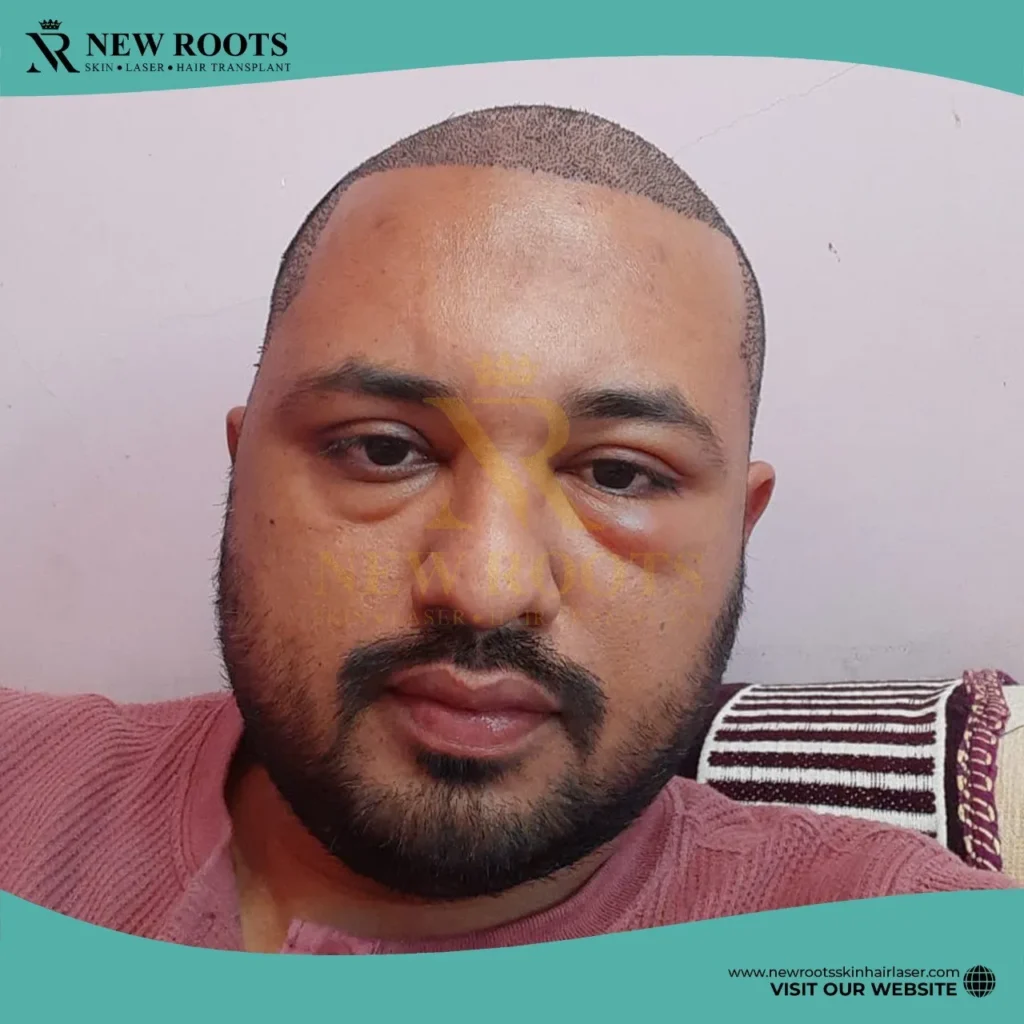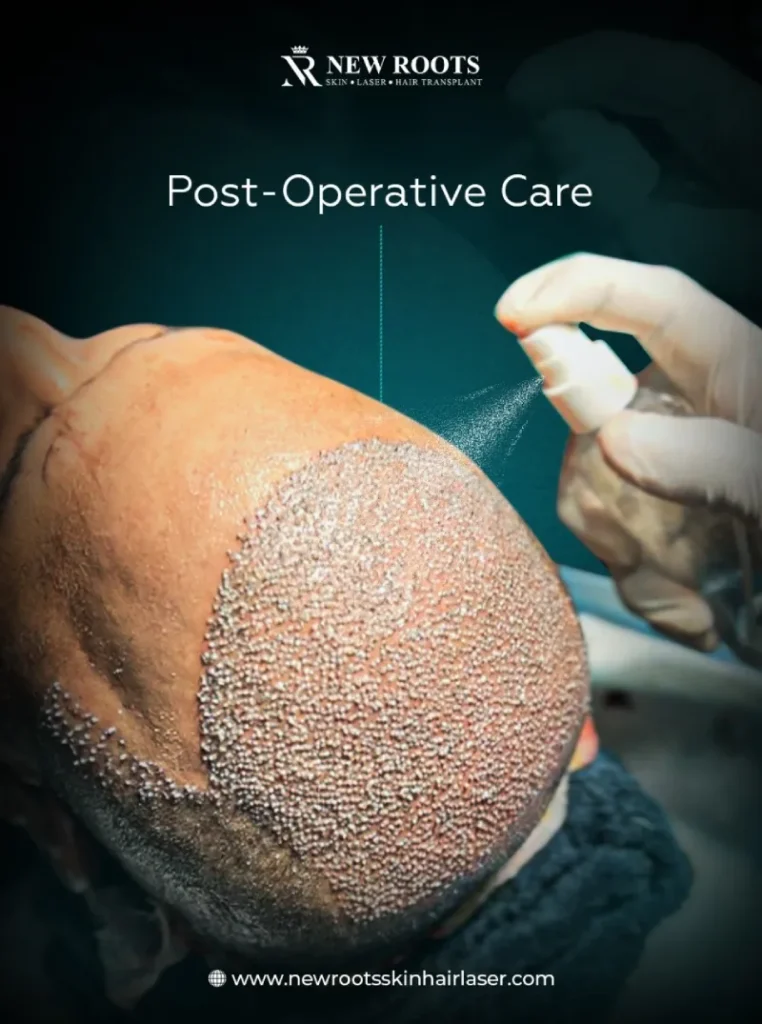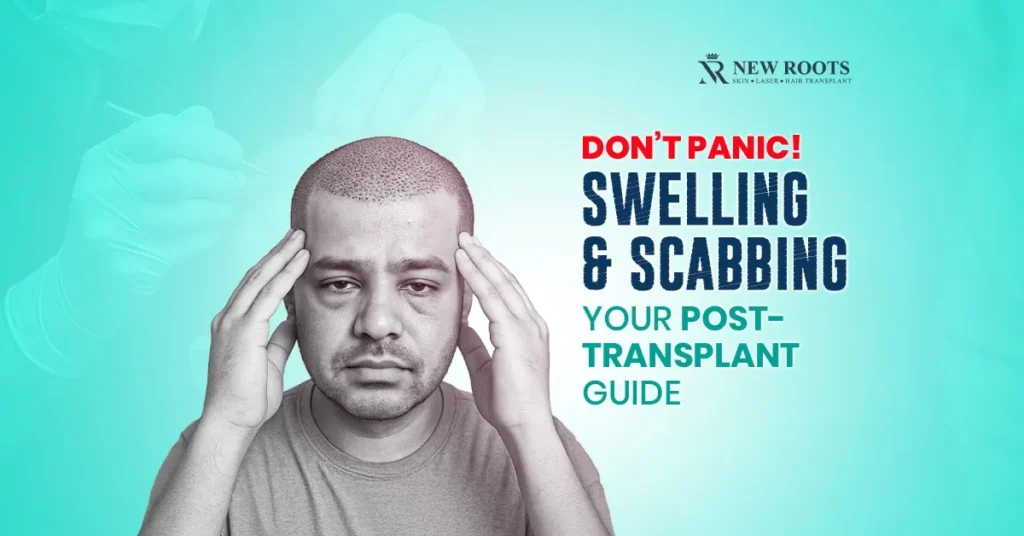Acquiring knowledge in the aspect of managing swelling and scabbing after a hair transplant is essential to maximize personal recovery and long-term results.
Bruising and local edema are normal sequelae following the operation, while scabs develop to help protect the transplanted follicles.
To resolve these negative effects, one should use several methods, such as head raise, cold tonic treatment, and constant water intake.
These actions help reduce swelling and scabbing after a hair transplant, making the recovery period more manageable.
With these management techniques, the patient can improve the quality of their recovery process and healthy hair growth.
Introduction
It will therefore come as no surprise if you are experiencing swelling and scabbing after a hair transplant.
It is for this reason that the causes and management of these symptoms are important to learn about to reap the best outcome from the complex conceptions of treatment.
Sometimes, help from experts and clinics like New Roots should be sought even after the surgical operation.
Table of Contents
Understanding Swelling and Scabbing After a Hair Transplant
Natural Response: A normal body reaction to hair transplant surgery is inflammation characterized by swelling and the formation of scabs. Injury elicits an immune response from the body and causes what is commonly referred to as post-treatment inflammation.
Timeline of Symptoms: The swelling generally ensues in 48-96 hours, while scabs begin to form a few days after endosurgery and may take about seven to ten days before they completely heal.
Types of Swelling: The patient may develop mild localized edema around the transplant area, some localized edema in the forehead, or watering of the eyes. This is typically temporary and must be affected by time going by.

Importance of Scabs: They cover the recently engrafted follicles with a layer of scabs that protects them against bacterial infections and other sundry microorganisms possible within the initial days of grafting.
Managing Discomfort: Although it is common to experience swelling and scabbing after a hair transplant surgery, there may be some level of discomfort.
Scratching surgery, discouraged, and mild moisturizing, together with adherence to pro forma after-operation care, might minimize itching.

When to Seek Help: specific attention to any symptoms that do not disappear and may indicate deep infection, edema, wet inflammation, or pus formation.
Effective Strategies to Manage Swelling and Scabbing After a Hair Transplant
Keep Your Head Elevated: During their sleep, such patients should sleep with their heads raised from the body to minimize inflammation and scab formation after the hair transplant. While sitting, it is important to use more pillows or a reclining chair to increase drainage and reduce fluid accumulation in the transplanted area.
Cold Compresses: One of them is using cold compresses on the forehead to help decrease the probability of having a swelling. Ice should be applied to the surgically treated site by packing it in a towel and applying it for 10-15 minutes every several hours during the first few days after the surgery.
Stay Hydrated: Staying adequately hydrated is fundamental to all forms of healing since the water aids blood flow and thus swelling as well as, indirectly, scab formation for hair transplant patients. Aim for at least eight 8-ounce glasses of water daily.
Limit Physical Activity: People who seek to avoid fluid accumulation in the body should also avoid heavy workouts since it causes dilation of blood vessels, which encourages swelling. In the following weeks after the treatment, it is recommended not to lift any heavy objects and refrain from intense exercising for a week.
Follow Dietary Guidelines: Cutting down on salt intake is essential because most vegetables and meats, which are commonly seasoned with salt, have water retention ability. Ensure one takes a balanced diet and also stresses a lot on foods that may supply the body with vitamins and minerals.
Pre-Medication: Ibuprofen and other similar nonprescription drugs work to contain inflammation and pain. It is always advisable to seek advice from your doctor before you use any drug after the surgery.
Monitor For Complications: Symptoms that can signify secondary effects can include increasing redness or oozing and pus, anda smelly, warm, or feverish condition. If patients are proactive with their physicians, this eliminates several problems and guarantees a good recovery process.
Adopting these approaches will boost the efforts to control inflammation and the formation of skin crusts after a hair transplant, enhancing healing.
Post-Transplant Care
Remedial precautions after an organ transplant are important to prevent the influx and formation of scabs. Ensure to follow these practices:
Washing Scalp: In two days, wash your scalp with a gentle soap; do not rub the implant zone as it is very delicate.
Moisturizing: Do not let your scalp dry because if it takes long to heal, it is likely that it will remain itchy.
Avoid Scratching: Do not scratch or pick at crusty scabs because this can cause issues, and the scab will likely not heal properly.
List of Post-transplant Care Tips:
Minimize Salt Intake: High salt leads to water retention and bloating; as a result, there is swelling.
Avoid Smoking and Alcohol: It can also be in contradiction with the healing of the wound and blood circulation.
Scalp Care And Post-Transplant Shedding
Importance of Scabs
The crusts formed after hair transplantation cover the healing follicles from bacteria and other pathogens in a way that acts as a protective shield. Of course, they look unpleasant, but one must remember that it is great news—the wounds are healing.
Scab Duration and Removal
More often than not, scabs take between 7 to 10 days to heal or form crusts. When healing occurs, they will secrete DNA naturally over time.
It is important not to rip them off since this might harm the new grafted hair in their existing area. Instead, there is washing and then applying some lotion to the scabs, which will then dissolve on their own.
Managing Signs of Illness
While most swelling and redness are normal, patients should be aware of severe symptoms that may indicate an infection:
Pus Discharge: Any colored discharge that is yellow or greenish is typically a sign of contamination.
Fever or Chills: This is probably a sign of systemic contamination, which might necessitate a visit to the physician.
If any of those signs and symptoms occur, it is advisable to see your hair transplant medical institution for a feasible evaluation.
New Roots Clinic Aftercare Tips: Follow Them
This is why, after hair transplant surgery at New Roots – Skin, Laser & Hair Transplant Clinic, we pay a lot of attention to proper aftercare, which greatly determines success. Our specialists recommend the following:
Follow-Up Consultations: Referral to a doctor for follow-up to examine the progress of recovery.
Educational Materials: Having clear, identifiable messages for patients about how they should manage themselves after the transplant.
Support Line: You also get an anytime helpline in case of any questions or concerns about the recovery or any other matter.
Conclusion
Swelling and scabbing after a hair transplant are prominent issues in procedures, and their care should form part of the possibilities of successful healing and outcomes.
Thus, with the help of the further comprehensive care mentioned above and consulting with highly developed clinics, such as New Roots, patients are ready to face the specifics of the post-surgery period successfully.
Keep in mind that crusty scabs and temporary swelling are normal, while appropriate management and post-treatment care are crucial to getting the result one wants.
Q&A ASK
After a hair transplant surgery, redness or swelling and formation of crusts are normal since the body responds to trauma by inflammation. This serves to cover the grafts as they heal and to cushion them against infection within the period of healing.
Normally, edema arises between day 2 and day 4 postoperatively and then subsides, while scabs mostly remain intact for 1 week to 10 days. Downtime can also differ from one person to the other depending on the skin type or failure to follow aftercare procedures.
After a hair transplant, one can reduce the effects of swelling and scabbing by sleeping with one’s head slightly raised, not doing any rigorous activity, and applying ice packs as well as drinking lots of water. Consuming food after operations also helps in their post-operative care as well as helps to shorten their recovery period.
Hair transplant’s moderate side outcomes, inclusive of swelling and scab formation, are commonplace after the surgery. However, in the case of pain, general or localized, increasing or permanent, the client should seek medical help to exclude complications.
If you develop constant swelling, reddening of your skin or hair, pus formation, or fever, do consult a physician after hair transplant operations and scab formations. Possible causes of some of these symptoms include the following, and they may be a sign of complications soon.




